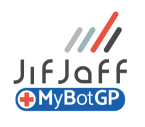Over the coming series we will discuss how the “JifJaff Nine Pillars of Automation” facilitates successful Internal Robotic Process Automation (RPA) delivery through an internal Centre of Excellence (COE). This article is focused on Pillar Eight – RPA Technical Architecture.
RPA Best Practise Implementation Approach is facilitated through the “JifJaff Nine Pillars of Automation” to provide the correct foundation, scalability, training, approach, structure & governance to allow the RPA COE team to deliver through a robust framework. This approach provides a clear line of sight crucial to achieving business benefits, ROI and thereby tackling common RPA scalability challenges.
Though everyone seems to be talking about RPA, there are very few sources on how RPA works, the software architecture and technology behind it. Different RPA platforms’ product choices will impact how your organisation will build upon the RPA platform it chooses. The architecture of Robotic Process Automation (RPA) is a combination of several tools, platforms, and various infrastructure elements to form a complete RPA tool.
Robotic process Automation Architecture encompasses the tools to design, manage, and run robots to automate repetitive tasks which are performed through an application user interface. Whilst there are nuances across different RPA software all have a common theme of components:
• RPA Software Platform: The platform where all of the RPA software will run. The RPA platform has the ability to develop meaningful insights on the bots and execution process.
• RPA Tooling: The functions & features to build & develop Automation solutions. Exception handling, ability to write to/from various data sources and to build reusable components.
• RPA Configuration Management: RPA Version Management.
• Execution Infrastructure: Infrastructure to execute Automation.
RPA Platform: All of the RPA components (Developer panels, Robots & Management & Orchestration Panels) will need to be housed either within the cloud or on-premise. The platform allows the storage of all RPA based resources and software robots. The RPA platform can schedule, monitor, and distribute the software robots of your system.
RPA Tooling: The capabilities that are usually seen in any RPA tool allow automating a variety of applications in different environments. RPA tools allow developing software bots that can be trained by recordings, configuring, and enhancing the programming logic such as loops and conditions, etc. Its important RPA software allow for reusable components that can be applied to multiple robots, which ensures the same time modularity, faster development, and easier maintenance.
Execution infrastructure: The RPA Solution Architecture encompasses whether virtual or physical machines are used to execute the desired processes. You can also scale up or down the number of machines in the system parallelly to automate the task through the execution infrastructure. This process is completely automated, and it rarely requires any human supervision or intervention.
RPA Configuration Management: This component looks after the versioning of the assets. It ensures the software robots and assets get regular updates, and newer versions. When you scale up, the different members of your RPA COE team develop new RPA assets. Some assets are reusable and shareable across multiple software robots, it is vital to have source code management solutions for merging and branching of those assets.
While the above state RPA Architectural aspects, there are also other very important technical aspects of RPA which need to be taken into consideration i.e., Programming language, Integrations, Usability, Security and Vendor Support. It is important to perform the necessary due diligence within the RPA toolset taking into account the various features, platforms, protocols, and infrastructure elements to form the complete RPA solution.

